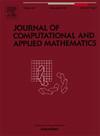将细分方案集成到支持向量机中改进信号分类
IF 2.6
2区 数学
Q1 MATHEMATICS, APPLIED
Journal of Computational and Applied Mathematics
Pub Date : 2025-10-08
DOI:10.1016/j.cam.2025.117142
引用次数: 0
摘要
将先进的信号处理技术集成到机器学习模型中,由于其具有提高模型性能的潜力,特别是在分类任务中,已经获得了越来越多的关注。支持向量机(SVM)由于其强大的数学基础和处理高维数据的有效性而被广泛认为是一种强大的信号分类工具。细分方案最初是在计算机图形学中开发的,用于几何建模,它提供了一种新颖的参数化方法,通过有效的计算过程迭代地精炼输入数据来进行特征预处理。本文从类可分性的角度研究了细分方案对支持向量机性能的影响,揭示了特征变换与支持向量机响应之间的关系。具体来说,它研究了在基于支持向量机的分类中应用细分方案对输入特征的理论和经验意义。分析了这些方案保持或增强类可分性的条件,重点讨论了控制极限曲线平滑性和每次迭代细分规则的张力参数。给出了一种从训练数据中估计张力参数的方法。在基于小波散射变换的信号分类背景下进行的实验结果表明,适当选择该方案的张力参数可以显著提高类的可分性,突出表明细分方案是提高机器学习工作流程中分类精度的一个很有前途的工具。本文章由计算机程序翻译,如有差异,请以英文原文为准。
Integrating subdivision schemes into SVM for improved signal classification
The integration of advanced signal processing techniques into machine learning models has gained increasing attention due to its potential to improve model performance, particularly for classification tasks. Support Vector Machine (SVM) is widely recognized as a powerful tool for signal classification due to its robust mathematical foundation and effectiveness in handling high-dimensional data. Subdivision schemes, originally developed in computer graphics for geometric modeling, offer a novel and parametric approach to feature preprocessing by iteratively refining input data through an efficient computational procedure. This paper studies the impact of subdivision schemes on SVM performance in terms of class separability and provides insights into the relationship between feature transformation and SVM response. Specifically, it investigates the theoretical and empirical implications of applying subdivision schemes to input features in SVM-based classification. The conditions under which these schemes preserve or enhance class separability are analyzed, focusing on the tension parameter which governs both the smoothness properties of the limit curve and the subdivision rule at each iteration. An estimation method for the tension parameter from the training data is also provided. Experimental results, performed in the context of signal classification based on the wavelet scattering transform, demonstrate that the appropriate selection of the tension parameter of the scheme can significantly enhance class separability, highlighting that subdivision schemes are a promising tool for improving classification accuracy in machine learning workflows.
求助全文
通过发布文献求助,成功后即可免费获取论文全文。
去求助
来源期刊
CiteScore
5.40
自引率
4.20%
发文量
437
审稿时长
3.0 months
期刊介绍:
The Journal of Computational and Applied Mathematics publishes original papers of high scientific value in all areas of computational and applied mathematics. The main interest of the Journal is in papers that describe and analyze new computational techniques for solving scientific or engineering problems. Also the improved analysis, including the effectiveness and applicability, of existing methods and algorithms is of importance. The computational efficiency (e.g. the convergence, stability, accuracy, ...) should be proved and illustrated by nontrivial numerical examples. Papers describing only variants of existing methods, without adding significant new computational properties are not of interest.
The audience consists of: applied mathematicians, numerical analysts, computational scientists and engineers.

 求助内容:
求助内容: 应助结果提醒方式:
应助结果提醒方式:


